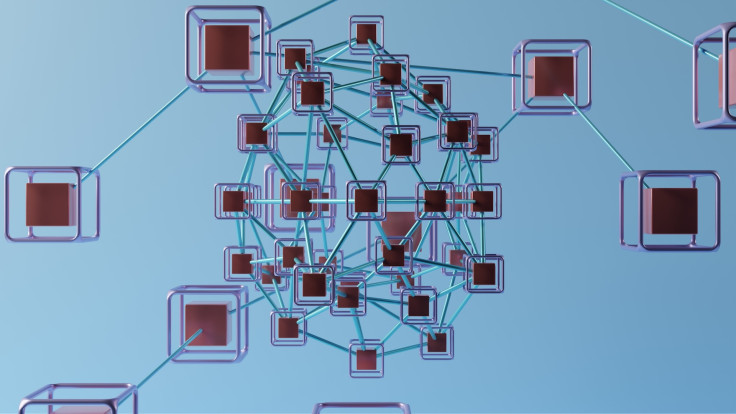Web3 Companies Are Bringing The Best Of Web2 Along For The Ride

Web2 and Web3 are commonly depicted as technology standards in competition with one another. Web2, aka the incumbent web, is the swipeable, mobile-friendly internet we're accustomed to, controlled by a hub-and-spoke model in which data is stored on centralized servers.
Meanwhile, Web3 is seen as the future: quite literally the third generation of the internet. It presents a vision for a decentralized and open internet where individuals have greater control over their data, identity and online interactions. Web3 uses foundational technologies like blockchain and cryptocurrency, whereas Web2 utilizes traditional fiat payment rails and platforms that serve as intermediaries.
On the surface, there appears to be more that divides Web2 and Web3 than unites them. Yet for all their fundamental differences, they maintain a shared bond. Web3 couldn't exist without its predecessor. However, the synergies between the two tech standards run even deeper, as embodied by the Web3 companies buying their Web2 forerunners and bringing them along for the ride.
Educating the World on Web3
When Web3 gaming titan Animoca Brands bought TinyTap, a Top 10 U.S. grossing kids app, last year, it marked yet another marriage between Web3 and Web2. TinyTap's gamification of education is designed to incentivize teaching and learning, rewarding teachers for creating course content and pupils for passing it on to the next student.
As Animoca Brands co-founder Yat Siu explained at the time, bringing TinyTap into Web3 would provide an opportunity to "leverage blockchain to make new opportunities available to educators worldwide, allowing them to generate equity from their creations while offering parents enhanced learning opportunities for their kids." Rather than radically upending TinyTap's business model, Animoca Brands sought to extend its existing capabilities, leveraging Web3 to unlock new means of monetization for creators.
When it comes to mergers and acquisitions, it's more common for established companies to look forward, buying startups whose tech has the potential to transform tomorrow. That's the strategy favored by major brands like Meta and Nike as they've sought exposure to Web3 through innovations such as the metaverse and NFTs. But there are also cases of the reverse occurring; four years ago, Bitcoin smart contract platform Rootstock acquired LATAM social media platform Taringa with the goal of integrating crypto-based payments.
A Nudge Is Better Than a Shove
Perhaps the most compelling reason for injecting Web3 into existing applications is the fact that humans are hardwired to favor familiarity. Few users are going to migrate to an untried social platform just because it has better data handling or rewards content curation. But if these components can be drip-fed into Web2 applications, demanding no radical changes to user behavior, Web3 becomes a far sweeter pill.
Animoca Brands' acquisition of TinyTap is one example of this "nudge" approach. Rather than forcing its users to migrate to a pure Web3 model overnight, Animoca elected to introduce this as a complement to existing payment streams. Nevertheless, TinyTap has made it clear that Web3 is where its future lies, emphasizing the benefits of tokenizing teaching materials to imbue them with lifelong value, which will generate revenue for educators.
As TinyTap CEO Yogev Shelly explained, this will allow educators to "connect with their students directly and the revenue that will be received from accessing content will go to whoever owns the content." He added: "For the students themselves, they can own a record of all their achievements throughout their lifetime, and since they actually own it, that will stay with them forever."
Why Buy Into Web2?
If Web3 is the future, why look to the past and acquire a company whose business model you're trying to displace? For one thing, users are the most valuable asset a business has, and when it comes to customers, Web2 is still king. The top Web3 platforms have only a fraction of the users their leading Web2 counterparts can claim. We're still waiting for the Uber or Airbnb of Web3.
There are other reasons why a Web2 takeover can occur, however, over and above user acquisition. For one thing, many platforms making use of Web2 technology can be enhanced by integrating Web3 tech such as decentralized identities, user-owned data and blockchain-borne micropayments. It's far easier to retrofit these features to an existing company than it is to create a new one from scratch.
This was the thinking behind Tron's acquisition of BitTorrent in 2018. The file-sharing company has subsequently been enhanced by the addition of its own blockchain and token to incentivize P2P data provision. BitTorrent's distributed storage capabilities have also been used to enhance decentralized applications operating on Tron, which now have a scalable Web3 storage solution to call upon.
Better Together
In the early days of Bitcoin, its evangelists believed the cryptocurrency would become a new monetary standard whose rise would trigger an exodus from failing fiat. So far, this revolution has failed to materialize; instead, crypto has established itself as an alternative to the traditional financial system, stepping in where fiat can't or won't suffice.
It may be the case that Web3 adoption follows a similar cycle: first expanding upon Web2 business models then disrupting them before eventually replacing them. We're not there yet, but if we do eventually arrive there, credit will be due to the Web3 companies with the foresight to take Web2 companies along for the ride.
Just as no planner would simply demolish a failing city and build a new one in its place, there's a clear case for infusing Web2 applications with Web3. There are many things wrong with the current internet, but rebuilding it from scratch is not feasible. Far better to seed Web3 into existing business streams, advancing toward a user-controlled internet one app at a time.
Sadie Williamson is the founder of Williamson Fintech Consulting.
(Opinions expressed in this article are the author's own.)
© Copyright IBTimes 2025. All rights reserved.





















